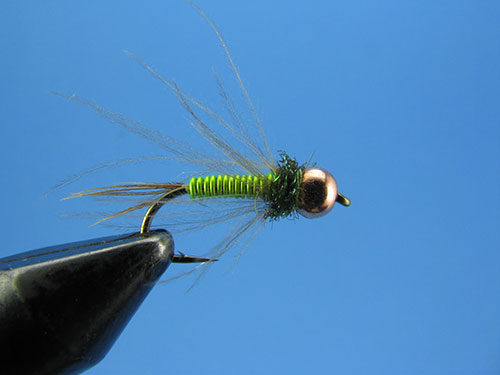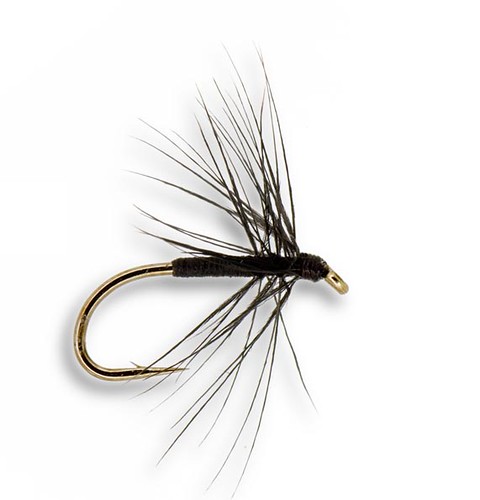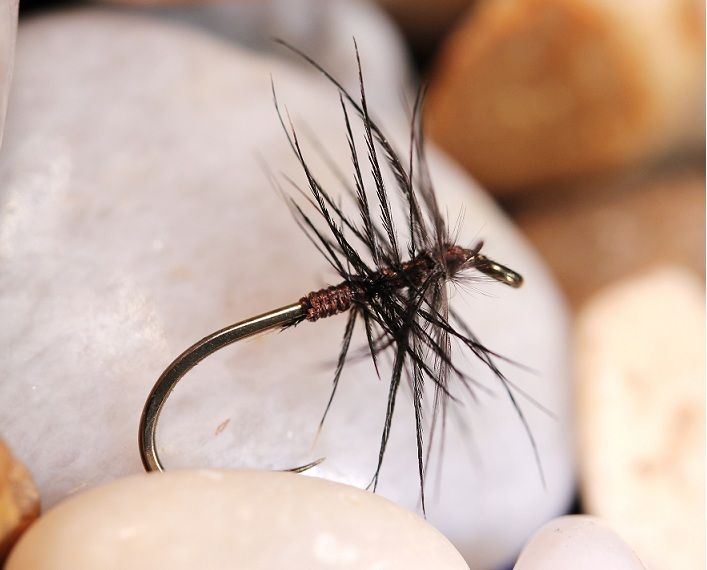
SCOTT HANSON
Translated by CARL WUEBBEN
If you’re a fan of John Barr’s Copper John series of flies but don’t like tying them, then here’s a simple one to make. The CDC-enhanced Poor Man’s Copper John. You can use a lot of different colored wire for the abdomen and Cul de canard (CDC). It is a simple addition to a lot of flies, like a Gold-Ribbed Hare’s Ear or Pheasant Tail Nymph. I believe it can really improve a nymph’s fish-catching ability. CDC-enhanced nymphs will make a positive difference in your fishing. Fish them during hatches and when there are no hatches going on. It doesn’t matter what is hatching, they work equally well during Mayfly, Caddisfly and even Midge hatches. And the best thing about using CDC on nymphs is that it doesn’t matter how slimy the feathers get when you catch fish because it’s just going right back under the surface on the next cast. So no need to “de-slime”.
PATTERN
HOOK – Your favorite 1X-long nymph hook, sizes 18 to 10
BEAD – Copper bead
THREAD – 8/0 (70 denier), color to match the abdomen
TAIL – Pheasant Tail fibers
ABDOMEN – Small of medium wire: copper, gold, red, wine, chartreuse or your favorite color
HACKLE – Natural Dun CDC feather
THORAX – Olive-brown or peacock-ice dub
- Debarb hook. Slip the bead on small hole first, place hook in vice and start your thread behind the beadhead up by the eyelet. Grab 6 to 10 pheasant tail fibers for the tail and measure out your tail to about a hook shank length hanging out the back and use the rest to tie down on the hook shank with your thread. End your thread at the beadhead.
- Tie on a piece of wire for the abdomen: tie it on right behind the bead and then wrap your thread over it back to the tail. Keep the wire along one side of the hook shank to ensure a flat body. Bring your thread back up to the beadhead.
- Wrap the wire up the hook shank with very close wraps (try for no gap between the wire). Take it to the beadhead and tie off. Then helicopter the tag end of wire off.
- Tie on a CDC feather by the rear of the beadhead. Clip off your tag end and then wrap the CDC feather to form a sparse collar. Tie off and clip your tag end.
- Dub a small thorax by twisting the dubbing between your index finger and your thumb. Then wrap onto the hook behind the beadhead, this will push your CDC rearward. Whip finish and clip your thread.
A very simple and effective fly!






